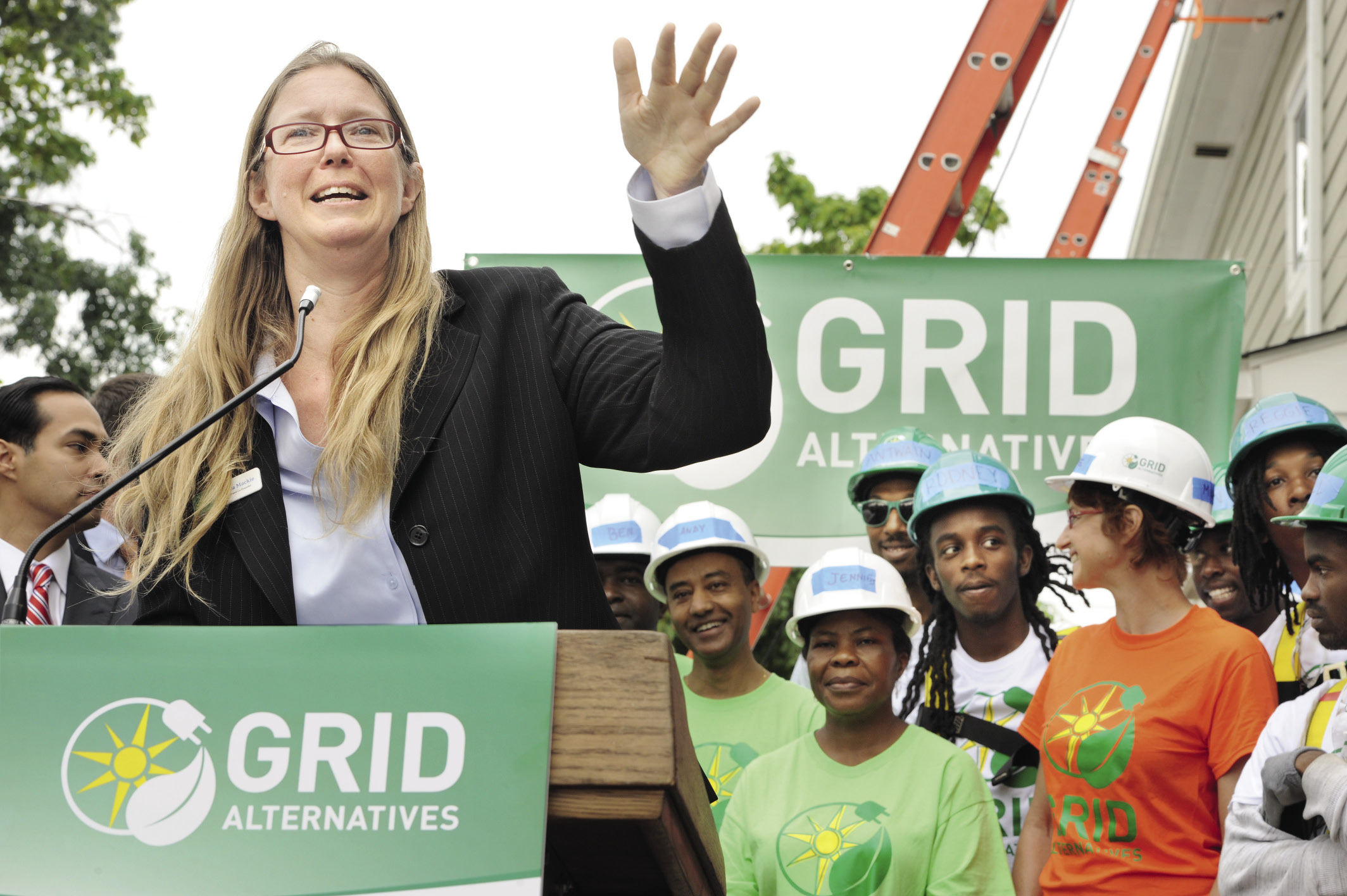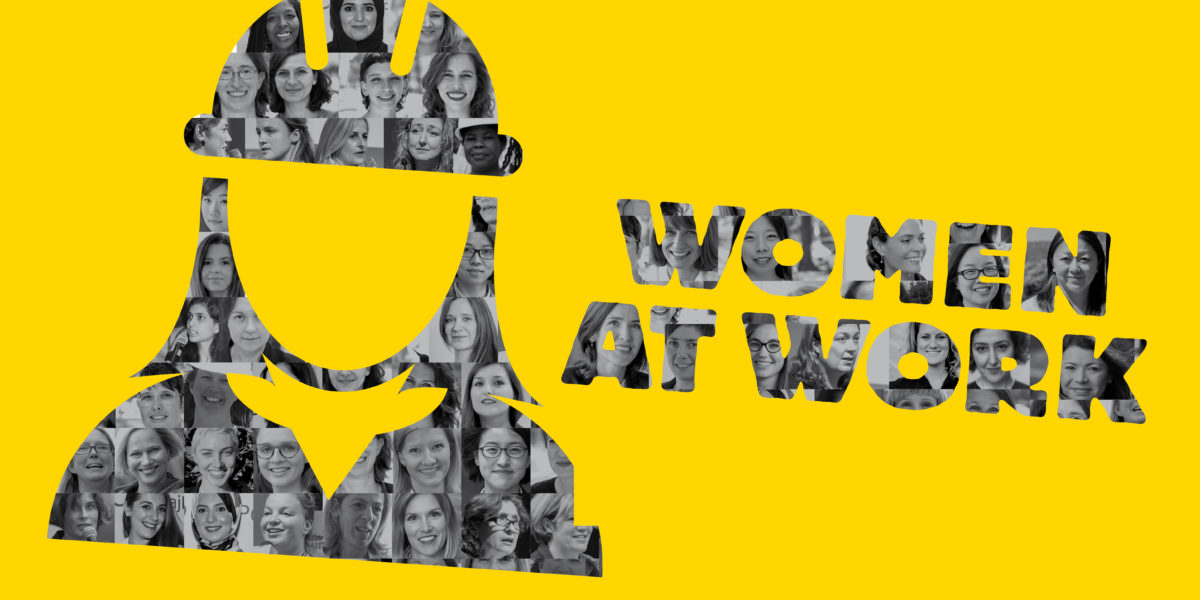pv magazine: Grid Alternatives first started serving low-income homeowners. What are the different types of projects and customers that Grid Alternatives is serving today?
Erica Mackie: We believe in a clean transition that includes everyone. Grid Alternatives focuses on folks that wouldn’t otherwise be able to get solar, meaning front-line communities. We exclusively serve the front lines of climate injustice, economic injustice and racial injustice. There are people we serve who own their own homes, people who rent, and people who have no access to electricity or energy. We do single-family solar installations, multi-family affordable housing solar, and then also large megawatt or multi-megawatt community solar projects, where people have an ownership stake in the project. Then, we also do off-grid solar projects for the Navajo communities, or the families in Nicaragua and Nepal that we serve.

Image: Grid Alternatives
Initially, Grid Alternatives was financed by the California Solar Initiative low-income rebate program. How is the organization funded today?
We patch together a whole bunch of things to make solar happen where it otherwise wouldn’t. The revenue stream is very different for a project in California than in Washington, D.C., or a tribal community project. We use any type of government or city resources that support equal access to solar power. This is combined with philanthropy, which can come from individuals, corporations or foundations. Sometimes that comes in the form of money – other times, that comes as equipment, such as modules or inverters. This is then combined with financing, which could come from tax credits of the federal government, or traditional financing. The mix varies for each type of installation we do.
Are projects fully subsidized?
In the single-family residential rooftop space, we are providing solar at no cost to the family. And by no cost, I mean really – no cost. Not like $0 down and pay later.
Can you talk about the structure of how projects are built and who they are built by?
You can think of each project as community-building, where we all come together and roll up our sleeves for a family to go solar and lower their electric bill. To deliver on each project’s triple bottom line: people, planet, employment. If it’s a single home, the family is there, and may be helping to install, but most likely are making lunch and engaged in the process. There are individuals on the build who are going through a specific workforce development job training program and are using it for skills to get started in the growing solar industry. And then we have some people who are volunteers that are more interested in learning about solar, but not as a career path. Others may already work in solar but have never really touched a solar module or seen how a system goes up.
Does Grid Alternatives plan to expand its offering in clean technology?
As technology changes and develops, and also as the impacts of climate change become more intense, we really wanted to take a holistic look at working with communities and the way in which we get ourselves from place A to place B. So, in the clean mobility space, when someone is looking at getting an electric vehicle, we are also starting to install chargers when they get the PV system.
In 2018, Grid Alternatives was selected by the California Air Resources Board to administer the One-Stop-Shop clean transportation pilot program. Can you tell us more about this partnership and the program?
In California, there are several programs funded by the Air Resources Board and other districts, which are varied and can be somewhat hard to find. One program could be for trading vintage vehicles generating smog, another could be for a voucher for an EV, transportation card, or a hybrid. Grid Alternatives is working with the state on One-Stop-Shop, which is essentially a clearing house to help families navigate the many programs that are out there in California around clean transportation.
How has the transition toward clean energy in the U.S. evolved to be more inclusive since Grid Alternatives got its start?
From a policy standpoint, as both states and cities have woken up to the critical need for 100% renewables and combatting climate change, this has also been paired with more and more cities and states thinking about creating a clean economy in a way that lifts up all of our communities. Illinois Solar For All is a good example of a new market that is developing it in a way that has a strong equity component.
For the low-income solar, like the rest of the solar industry, we have benefited from reductions in equipment costs. When I started Grid, panel prices were about $4.50 a watt and now they are under $1. This makes a huge difference in our ability to scale and serve markets and families.
On the workforce and jobs side, the industry has grown to be a tremendous employer. When Grid was first getting its start, there was certainly promise for jobs in solar, but there wasn’t opportunity at the scale like there is now. The industry is a large employer that can lift the barriers for employment to provide transformative career opportunities for communities that have historically been underemployed, or for individuals who have been impacted by the “criminal injustice system.”
This content is protected by copyright and may not be reused. If you want to cooperate with us and would like to reuse some of our content, please contact: editors@pv-magazine.com.



1 comment
By submitting this form you agree to pv magazine using your data for the purposes of publishing your comment.
Your personal data will only be disclosed or otherwise transmitted to third parties for the purposes of spam filtering or if this is necessary for technical maintenance of the website. Any other transfer to third parties will not take place unless this is justified on the basis of applicable data protection regulations or if pv magazine is legally obliged to do so.
You may revoke this consent at any time with effect for the future, in which case your personal data will be deleted immediately. Otherwise, your data will be deleted if pv magazine has processed your request or the purpose of data storage is fulfilled.
Further information on data privacy can be found in our Data Protection Policy.